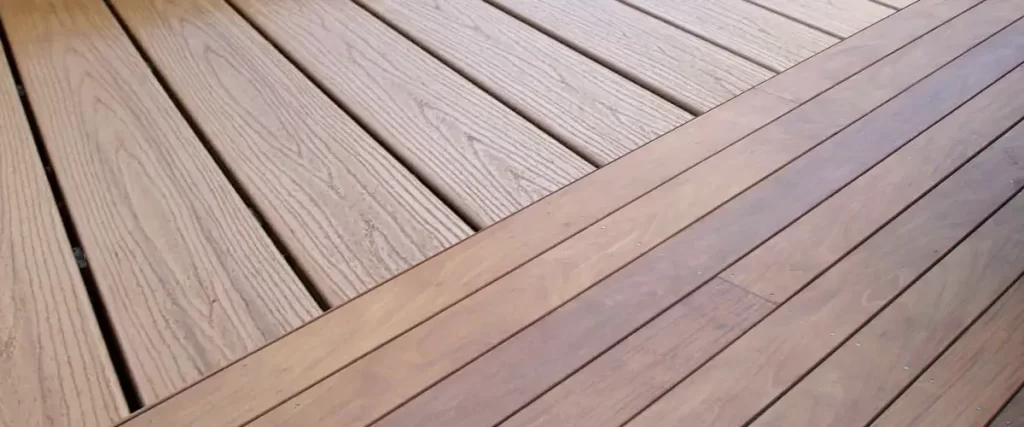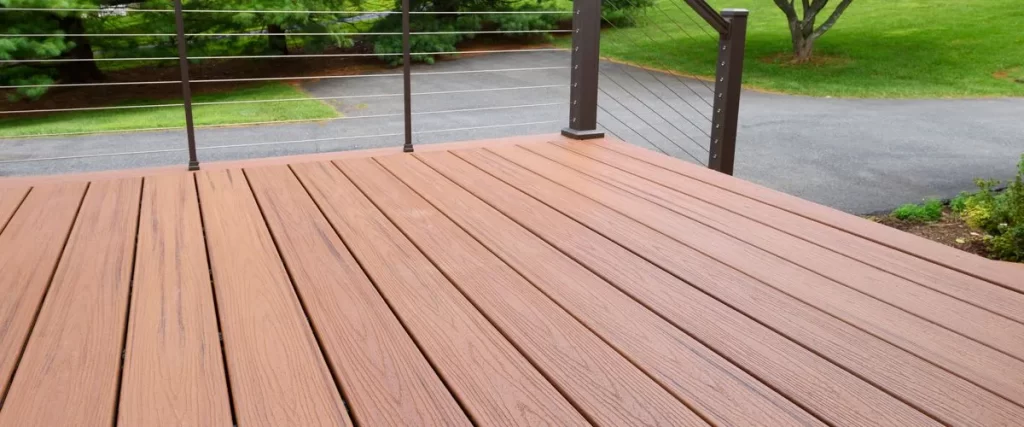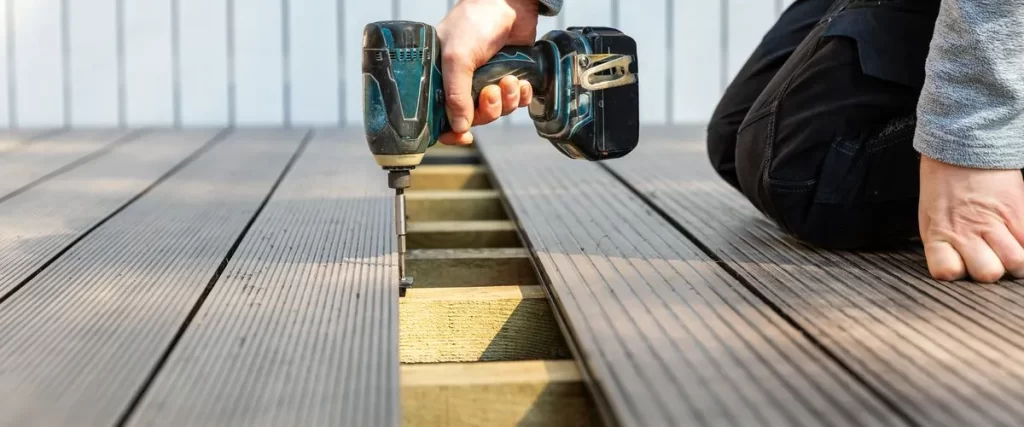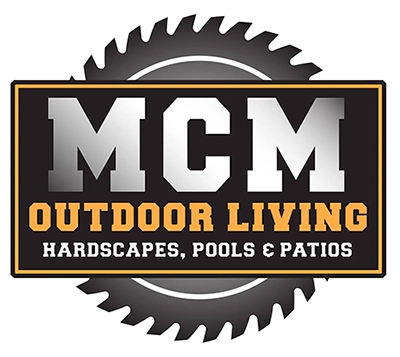Imagine stepping outside your back door into a space that’s inviting, low-maintenance, and built to last. If you’re like most homeowners, you’ve probably dreamed about the perfect backyard deck, but there’s one big question: Should you go with traditional wood or modern Trex composite decking?
We get it. You’re not just building a deck, you’re making an investment in your home and lifestyle. And that’s why making the right choice from the start is crucial. The last thing you want is to regret your decision five years down the line when your deck starts warping or becoming a money pit.
So, let’s dive in and unpack everything you need to know about Trex vs wood decks: the real costs, what maintenance looks like, how long each option will last, and more. No fluff, just the good, the bad, and what you need to know to make a confident decision.

What Is Trex Decking?
Before we get into comparisons, let’s clarify what Trex is. Trex is a brand of composite decking made from a mix of recycled wood fibers and plastic. It’s known for its durability, eco-friendliness, and minimal upkeep requirements.
Unlike traditional wood, it won’t rot, splinter, or need staining every year, and that alone makes it a strong contender for a lot of homeowners.
Wood Decking: The Traditional Favorite
Wood decking typically includes materials like pressure-treated lumber, cedar, redwood, or tropical hardwoods like ipe. These types of decks have been the go-to for decades. They look natural, smell great, and are usually more affordable up front.
But (and this is a big “but”) wood is more vulnerable to weather, pests, and general wear and tear. Especially if you live in a place with lots of moisture or sun.
Cost Comparison – Trex vs Wood
When you’re pricing out a new deck, don’t just look at what you’ll spend on materials. Think total cost of ownership. Materials, labor, upkeep, and eventual replacement.
Upfront Costs
- Pressure-Treated Wood: $15–$25 per square foot (installed)
- Cedar or Redwood: $25–$35 per square foot (installed)
- Trex (Composite): $30–$60 per square foot (installed)
Yes, Trex costs more up front. But the math shifts when you consider long-term maintenance.
Long-Term Value
Trex doesn’t need sanding, staining, or sealing. Wood does. Every 1–2 years. That adds up. On average, maintaining a wood deck could cost $300–$700 annually. In 10 years, that’s several thousand dollars, enough to tip the scale in Trex’s favor.

Maintenance – How Much Work Are You Really Signing Up For?
If your weekends are precious, you’ll want to pay close attention here.
Wood Deck Maintenance
- Annual cleaning
- Staining/sealing every 1–2 years
- Regular inspections for rot, splinters, loose nails
- Pest control in humid or wooded areas
Trex Maintenance
- Occasional soap-and-water cleaning
- That’s it. Really.
With Trex, you get to enjoy your deck, not work on it.
Longevity – Which Deck Lasts Longer?
Trex typically lasts 25 to 35 years, depending on the product line and climate conditions. It often comes with a 25-year fade and stain warranty.
Wood decks vary:
- Pressure-treated wood: 10–15 years (with good maintenance)
- Cedar/Redwood: 15–20 years
- Hardwoods (like ipe): 25+ years, but they require significant upkeep
So if you’re planning on living in your home long-term, or selling it with a sturdy deck as a feature, Trex gives you peace of mind and a better return.
Aesthetic & Feel – Natural Look or Modern Upgrade?
This one’s more personal, but it still matters.
Wood Decks:
- Natural beauty and smell
- Can be stained in different shades
- Shows wear over time (which some people like)
Trex Decks:
- Wide range of colors and textures
- Consistent look year after year
- Doesn’t splinter (huge plus if you’re barefoot or have kids/pets)
Modern composite decking can mimic the look of wood incredibly well, but if you’re a purist about natural materials, wood might still win your heart.
Environmental Impact – Which Is Greener?
Trex is made from 95% recycled materials, including plastic bags and reclaimed wood. That’s a win for sustainability.
Wood is a renewable resource, but if it’s not sourced responsibly (look for FSC certification), it can contribute to deforestation.
So if being eco-friendly is important to you, Trex has a slight edge.

Why MCM Outdoor Living Is the Smart Choice for Your Decking Project
Our team at MCM Outdoor Living has been designing and building custom decks for years. We’re not just here to build a structure, we’re here to help you build the right one that lasts, saves you money, and looks amazing.
We know what works, what doesn’t, and what will hold up best over time. From design to final screw, we handle it all. And we treat your home like it’s our own.
Ready to get started? Call us today at (469) 583-6213 and let’s bring your dream deck to life.
FAQs – Common Questions About Trex and Wood Decks
Which lasts longer, Trex or wood?
Trex typically lasts 25–35 years, while most wood decks last between 10 and 20 years depending on upkeep and wood type.
Does Trex get hotter than wood in the sun?
Yes, Trex can get warmer than wood in direct sunlight. However, lighter color boards help reduce heat absorption.
Can I put furniture and a grill on a Trex deck?
Absolutely. Trex is built to handle normal deck use, including furniture and grills (with a heat barrier underneath).
Is Trex slippery when wet?
Trex is designed with texture to reduce slipperiness, but like any surface, it can be slippery when wet or icy.
How much maintenance does a wood deck really need?
A wood deck needs to be cleaned at least once a year and stained/sealed every 1–2 years to avoid deterioration.
Can you paint or stain Trex?
Trex decking is designed not to be painted or stained. It holds its color for decades without needing touch-ups.
Does a Trex deck increase home value?
Yes, composite decks like Trex are attractive to buyers and can improve resale value due to durability and low upkeep.
Is composite decking safe for kids and pets?
Yes. Trex doesn’t splinter, has no nails popping out, and is generally safer underfoot than traditional wood.
Final Thoughts – Which Deck Is Right for You?
Here’s the bottom line:
- Choose wood if you love the natural look, don’t mind the maintenance, and want a lower upfront cost.
- Choose Trex if you want durability, low maintenance, eco-friendly materials, and long-term value.
Both have their pros and cons, but one will likely fit your goals better than the other. And whichever route you go, doing it right the first time will save you years of headaches (and dollars).
If you’re ready to explore your options or want professional advice tailored to your home, contact us at (469) 583-6213. We’re here to help you make a choice you’ll be happy with for decades.
